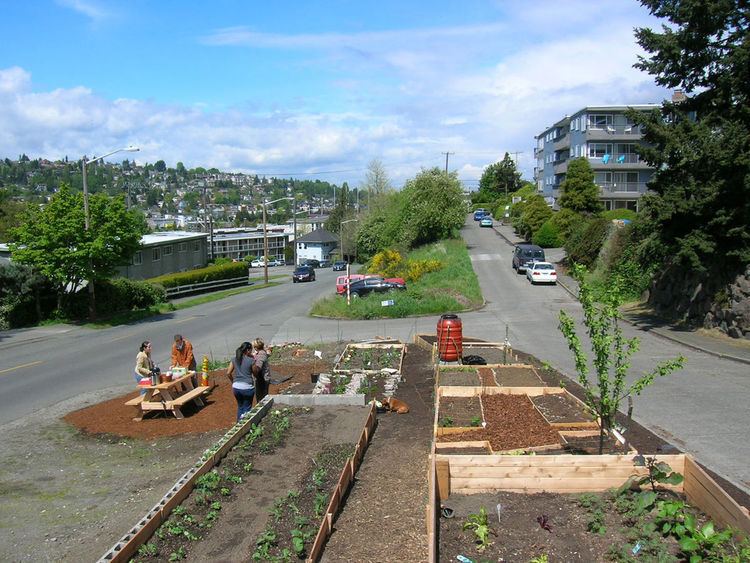 | ||
Public produce is a subset of urban agriculture. It refers to fruits, vegetables, nuts, and herbs cultivated in public space, and freely available to the public. Public produce differs from traditional community gardens, as the produce from the latter is generally not for public consumption, but for those who tend the garden. Public produce also differs from community gardens in that the food is grown in true public space, such as in parks, plazas, or town squares; along streets; or on the grounds of public institutions, such as city halls, courthouses, libraries, and schools. (Community gardens are often established on vacant residential lots or abandoned private property. These parcels may be owned by the municipality, but they are not generally regarded as true public space, some even having fences and gates to keep the general public from entering).
History
Public produce is a recent re-emergence of government-endorsed public food gardens, like the Victory Gardens of World War II. Public food gardens were quite popular in America during periods of war and economic distress. During the Long Depression of the 1890s, World War I, the Great Depression, and World War II, public food gardens bolstered food security, while encouraging self-reliance. Public produce during the 21st century continues to meet the aims of those earlier public space gardens: bolster the fresh produce supply for communities and promote social equity.
According to Darrin Nordahl, public produce (a term he coined in his book Public Produce: The New Urban Agriculture) comprises three facets:
1. The food must be grown in true public space (parks, plazas, streets, or any space where all members of the public are welcome);
2. The food must be freely available to all members of the public; and
3. The garden is permitted, funded, and/or maintained by public officials, as part of a broad public policy to improve the diets of citizens.
